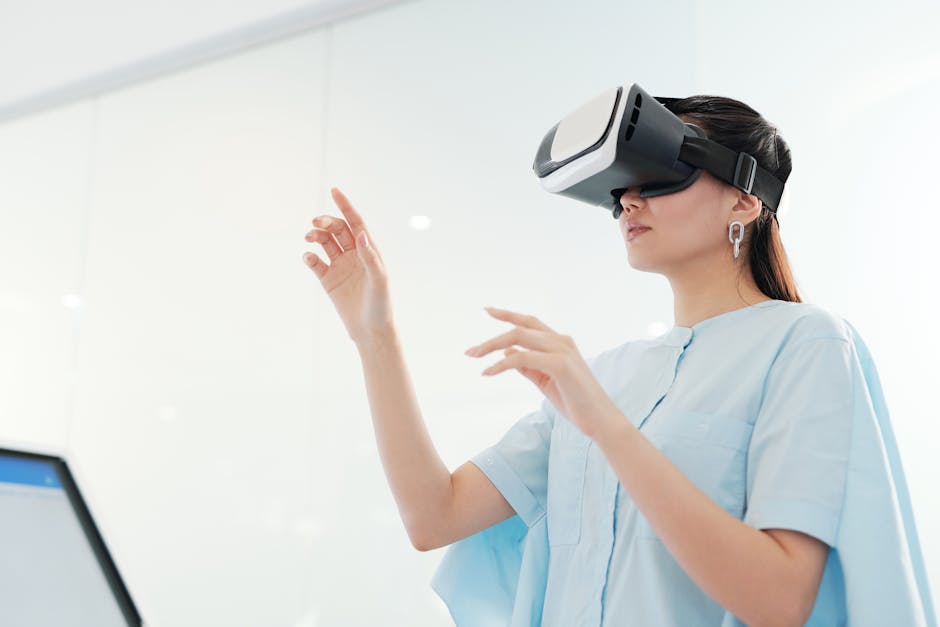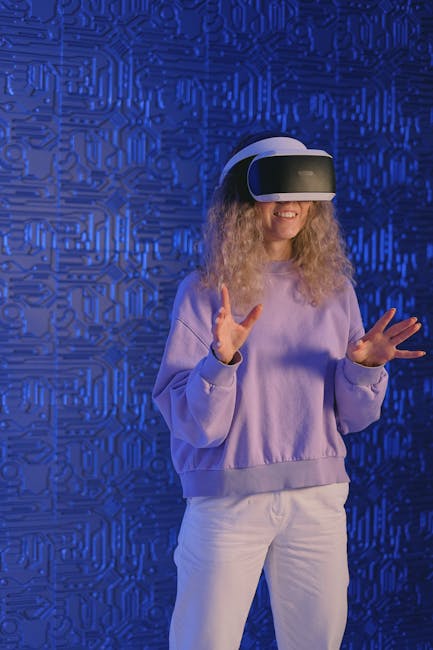
Augmented reality (AR) is more than just a buzzword—it’s a creative leap for brands and agencies eager to craft memorable digital experiences. As digital marketers and designers, we know how display advertising is evolving, and AR is at the forefront of this change. This beginner’s guide combines our philosophy at SizeIM—efficiency, consistency, and brand-centric design—with actionable steps to help you plan, design, and launch immersive AR campaigns that stand out and drive measurable results.

Why Are Augmented Reality Ads Gaining Traction?
- Deeper Engagement: AR campaigns draw users in, encouraging interaction beyond passive scrolling.
- Brand Recall: Immersive experiences are proven to improve recall and affinity over static banners.
- Creative Versatility: From try-before-you-buy cosmetics to interactive product demos, AR lets brands break the fourth wall of digital marketing.
We’ve observed firsthand: audiences are hungry for interaction. With AR, we’re no longer limited to flat rectangles on a screen; we can invite people right into our brand universe.
1. Clarifying Objectives: What Do You Want From AR?
Every successful campaign begins with crystal-clear objectives. As ad creators, we must define the purpose of the AR campaign:
- Brand Awareness: Do you want broader recognition for a product line or service?
- Product Trial: Are you enabling users to visualize products—such as furniture, fashion, or tech—in their own environments?
- Lead Generation or Sales: Will your AR layer feature interactive CTAs or seamless checkout integrations?
Setting measurable KPIs, like engagement rate or conversion lift, guides your creative and helps you optimize post-launch.
2. Understanding Your Audience: Designing for Real People
AR campaigns flourish when they’re rooted in the behaviors and preferences of your ideal customer. Ask yourself:
- What devices are they likely to use? Today, mobile-first is a safe bet, but keep an eye on wearables and smart glasses.
- Are they tech-savvy? Heavy gamers and Gen Zers may embrace AR instantly; others might need clear onboarding.
- What excites them visually? 3D animations? Personalization? Utility-driven overlays?
We suggest running brief audience polls, or using social listening tools, to better shape your messaging and interactivity.

3. Storyboarding Immersive Experiences
The heart of AR campaigns is creative storytelling. Here are a few starting points to jumpstart brainstorming sessions with your team or clients:
- Virtual Try-Ons: Let users see products (glasses, hats, makeup) on themselves using their phone camera.
- Space Visualization: Have shoppers place furniture, décor, or consumer goods in their actual environments.
- Gamified Engagements: Drive interaction with AR treasure hunts, filters, or minigames linked to product discovery.
- Educational Layers: Overlay product features, how-to tips, or 3D assembly instructions right in the user’s context.
Think beyond wow-factor—does your AR experience drive a core business goal, or just fleeting novelty?
4. Building AR Campaigns: Technology Without the Headaches
One of the worries we’ve seen among agencies and design teams is technical complexity. Good news! You don’t need to reinvent the wheel. Here are your main build routes:
- WebAR: Users access experiences directly from their browser, no app required. Prioritize this for reach and ease of onboarding.
- Mobile App SDKs: If you already have an app, integrate AR via ARKit (iOS) or ARCore (Android) for richer, device-optimized experiences.
- QR Codes & Triggers: Let audiences unlock AR from print ads, packaging, or displays—bridging offline and online.
At SizeIM, our design philosophy is to minimize friction at every step—make sure your AR assets seamlessly match the resolutions and requirements of every platform and network. When you use a platform like SizeIM, you ensure assets resize quickly and branding stays rock solid, whether it’s a leaderboard or mobile square.

5. Consistency Across Platforms: Scaling Your AR for Every Screen
One hidden headache for design teams: AR creative looks fantastic on one device, but breaks elsewhere. We urge every agency and in-house designer to embrace these best practices for cross-platform AR:
- Flexible Layouts: Use responsive frameworks so overlays and interactions adapt smoothly from desktop to mobile.
- Centralized Brand Kits: Keep assets (logos, color palettes, fonts) ready to drag-and-drop across all ad variations. Tools like SizeIM include brand kit management by default.
- Instant Multi-Format Output: As you generate various ad sizes for networks (e.g., 300×250, 728×90, 320×50), ensure the AR entry point and creative is stunning and legible everywhere.
Time and again, we’ve seen campaigns lose impact when their look changes between channels. Stay one step ahead by designing for scale from day one.
6. Seamless Integration With Wider Campaigns
The best AR is not a one-off stunt, but a natural part of your larger advertising and content ecosystem. Align your AR entry points with:
- Social Media: Embed AR triggers in Instagram Stories, Facebook feeds, or TikTok for exponential sharing.
- OOH and Print: Turn billboards, magazines, or shop windows into gateways to digital experiences.
- Email & Landing Pages: Tease the AR experience or follow up post-engagement for remarketing.
Use UTMs, custom landing pages, and integrated campaign analytics to track and optimize your omnichannel storytelling.

7. Measurement & Iteration: Making AR Smarter Over Time
Great AR campaigns are living, breathing ecosystems. Make analytics your best friend. Some essential metrics and methods:
- Dwell Time: How long do users actively interact with your AR feature?
- Engagement Rate: What percentage tap, swipe, or share your AR ad versus those who ignore?
- Conversion Events: Are users claiming coupons, signing up, or making purchases post-AR?
- Heatmaps: Where do users focus? Where do they drop off?
Set up weekly reviews to A/B test triggers, layouts, or reward mechanisms. Iterate ruthlessly, updating AR content often to keep campaigns fresh and high-performing.
8. Common AR Design Pitfalls (and How We Avoid Them)
- Over-complexity: Resist the urge to overload with animated gimmicks. Focus on one or two magical, repeatable actions.
- Slow Load Times: Lightweight models and optimized creative mean happier users—and better completion rates.
- Poor Accessibility: Ensure AR experiences offer text overlays and clear guidance, making them inclusive and usable for all.
At SizeIM, we help you prototype, test, and refine in minutes so you can escape endless back-and-forths and release campaigns that look and feel amazing from the start.
9. The Future: How AR Will Shape Display Advertising
The line between display ads and brand experience is fading. As we look to the next wave, a few trends stand out:
- Mixed Reality Commerce: Instant product try-on and purchase in one action, lowering friction from discovery to checkout.
- Personalized, Data-Driven Experiences: AR that adapts to the viewer’s context, past behavior, or geo-location.
- Always-On Campaigns: Persistent digital layers on packaging, windows, or fixtures, constantly refreshing with new offers and stories.
For marketers and designers who embrace this, AR becomes a tool not just for attention—but for authentic connection, story, and utility.

Getting Started: Fast-Track Your First AR Display Campaign
Ready to take the leap into immersive, multi-size advertising? Here’s our recommended workflow:
- Choose your core campaign goal.
- Storyboard a simple AR experience that aligns with your brand’s unique promise.
- Use a platform optimized for cross-network, cross-device ad design, like SizeIM, to ensure every asset looks perfect, every time.
- Test—often and early. Gather real user feedback and analytics to adapt rapidly.
AR isn’t just for big brands or technical wizards. With an efficient, brand-conscious workflow, any agency or marketing team can create AR campaigns that dazzle—and deliver.
Curious about how to design display ads that are both immersive and flawlessly resized for every campaign and every network? Explore how SizeIM helps you bring AR (and any digital ad) to life—while saving hours on every project—at sizeim.com.
